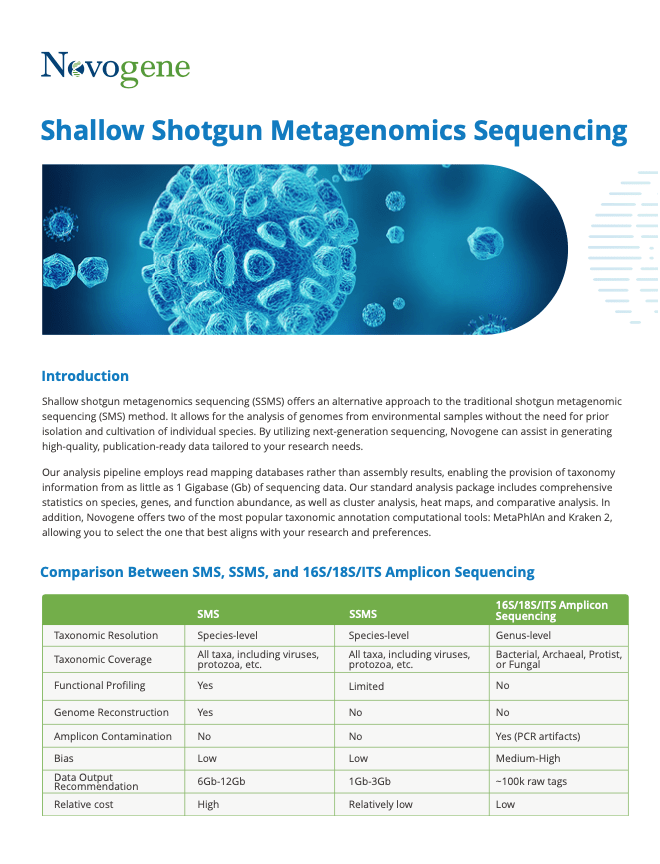Shallow Shotgun Metagenomics
Introduction:
To help you make scientific advancements, Novogene has always maintained a high throughput of sample processing within a predetermined timeline, and we continuously work to improve our service to achieve it. Don’t hesitate to get this flyer to discover more about our service.

